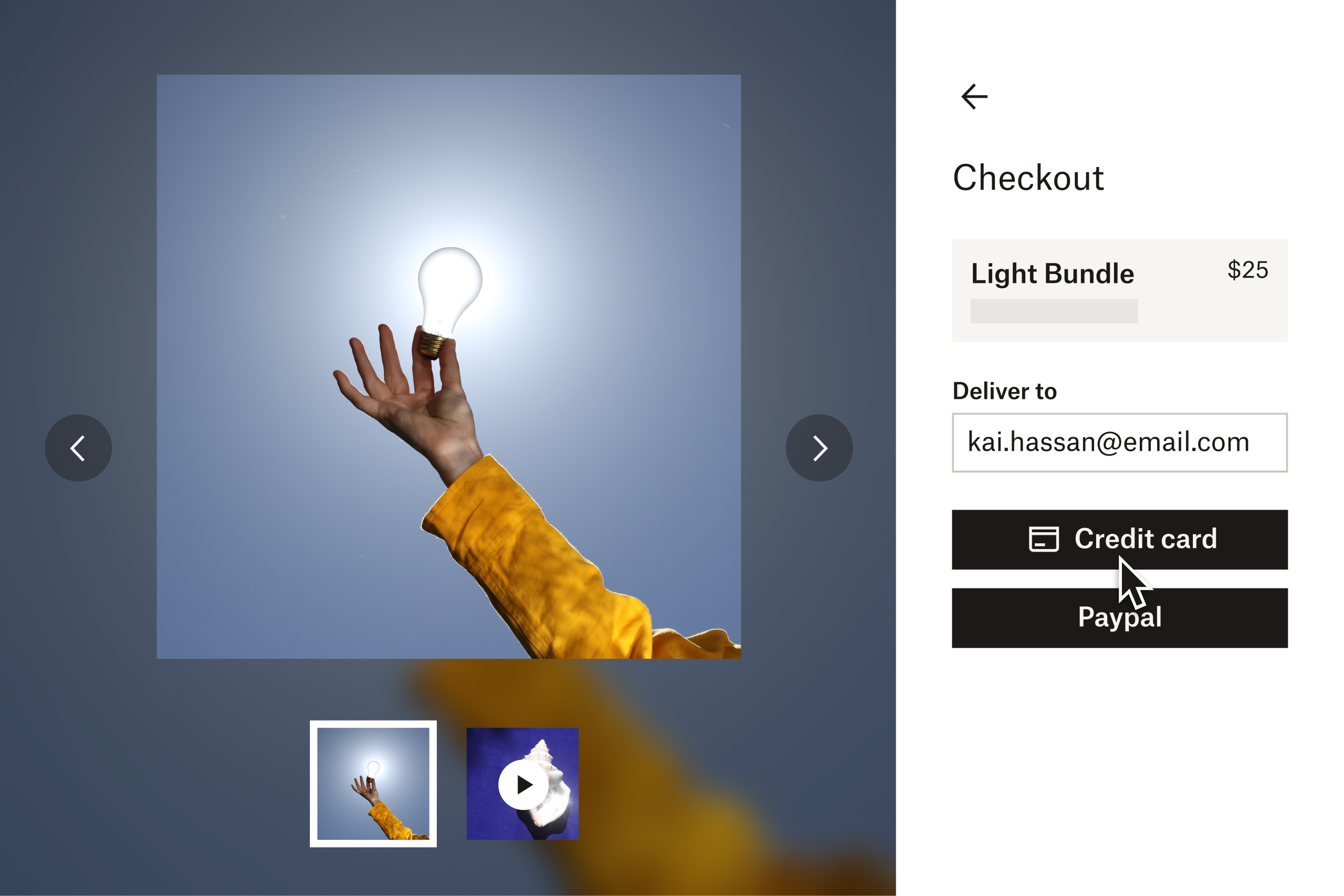It’s no secret that the e-commerce industry is booming. In fact, e-commerce sales in the US were projected to surpass one trillion dollars in 2022 – and this figure will continue to grow in the coming years.
There is a lot of exciting potential for online business owners and entrepreneurs – but also plenty of competition. So if you’re interested in launching an e-commerce brand, it’s important to do your research.
In this guide, we’ll take you through the full process of launching an e-commerce shop. From understanding the current landscape to identifying your niche and marketing your shop, we’re here to help bring your ideas to life and turn your new business into a success.
Jump to section:
- Research the e-commerce landscape
- Identify your niche and find product opportunities
- Develop your business plan
- Choose your e-commerce platform and launch your store
- Market your business to attract customers
- Tips for starting an e-commerce business
Research the e-commerce landscape
Before starting an e-commerce business, you need to understand the e-commerce industry – just like you’d research things like locations, demand and suppliers if you were starting a brick-and-mortar shop.
Starting an e-commerce business is an investment, and it should be treated as such – don’t work off a hunch! Part of your research process should involve looking into different e-commerce business models. Some examples include:
- Service-based
- Software
- Digital content
- Wholesaling or warehousing
- White labelling and manufacturing
- Drop-shipping
- Subscriptions
- Affiliate marketing
Within this, start to think about how you could deliver your product or service to your potential customers. Do you want to sell single products or packages? What about subscriptions? Once you’ve researched the current e-commerce landscape, it’s time to find your place within it.

Identify your niche and find product opportunities
As much as you would like to become the next Amazon, you can’t sell absolutely everything right from the start. You need to target a niche market first.
Finding your niche may be challenging, but it is one of the most important parts of the process of starting an e-commerce business.
The rapid growth of the e-commerce industry means competition is fierce – so the more specific your niche, the better. If your competition only provides similar products or services to your business idea, but not identical, then this is an ideal product opportunity for you to seize.
To identify your niche, ask yourself the following questions:
- What is your area of expertise?
- Do you know enough about the product or service you want to sell?
- Where does your knowledge, experience or skillset fit into the market?
- Will you need to conduct further training or gather more experience?
Scope your competition
Going into an overly crowded niche, or one dominated by big global players, is risky. But so is entering an area with no competition at all – this usually indicates there is no market and therefore no potential.
When looking at your competition, focus on what they do right as much as what you think they are doing wrong. Analyse:
- Their business model
- The types of products or services they specialise in
- Their best-sellers
- Their website
- Their marketing methods
Find your target market
Use the research you’ve conducted so far to identify any gaps in the market that your product or service could fill. Consider a SWOT analysis:
- Strengths – what do you do particularly well? Do you have any resources, skills or experience that are unique to you and that you could use in your business?
- Weaknesses – in what areas could you improve? What are your customers likely to see as a weakness?
- Opportunities – can you leverage any of your strengths into opportunities? What about current trends or customer buying patterns?
- Threats – what are your competitors doing, and how are they currently performing? Will your weaknesses expose you to any obstacles?
This will help you identify both internal and external factors that could contribute to your business’s success or failure. It should include considerations such as barriers to entry (like additional investments or specialist software) and the workarounds available to overcome them.
Brainstorm ideas and keep track of your progress in productivity tools like Dropbox Paper. Other resources such as social media, Trend Hunter and Google Trends will enable you to monitor online search trends in your chosen niche.
During this, don’t forget about your target audience. Develop a persona that outlines your ideal customer’s characteristics (including their age, income and where they live), and how you plan to attract them to your product or service.
Validate your idea
After you’ve settled on a product or service, you need to make sure you can actually execute your idea. There are two main methods for evaluating business ideas:
- A market-based approach – what is the demand for your product or service? Is this set to change in the foreseeable future? Is it a flat or growing market, or just a fad? What are the competitors currently doing that you think you could do differently?
- A product-based approach – what is the potential markup and selling price for your product or service? Does your product or service solve a specific customer pain point or serve a passion? Are you likely to encounter any seasonal buying fluctuations?
Once you understand the market and your product or service, you can gain more of an idea about how much starting your e-commerce business is going to cost. For example, digital products are cheaper than physical products and can be priced according to the value they provide rather than the ability to turn a profit. This may be a better option for a solopreneur with a limited budget.

Develop your business plan
The best business strategies are wide-ranging and encompass more details besides the basics, like what your business is going to be and what you’re intending to sell.
The business plan for your e-commerce site should include:
- Start-up costs
- How you‘ll source your product or service – for example, are you going to make it yourself, manufacture it, wholesale it, drop-ship it or create it digitally?
- Inventory management for your online store, if relevant
- Financial management and how your business will make money
- Your operations model
- Your market research, including your competitor analysis
- Your marketing strategy and your plans for reaching new customers
- Your legal structure
Use Dropbox Paper to draft and finalise your strategy, and to share your plans with partners or peers for feedback and collaboration.
Finalise your business name and branding
Choosing a business or brand name, then determining the best (and available!) domain name, can be just as challenging as deciding which product or service to sell. The legal name of your online business and your domain name don’t have to be exactly the same, but they should be consistent.
Your business name should be simple but creative, and a reflection of your brand identity. Making it relevant to your niche may also increase appeal to potential customers. Before you make your final choice, it’s a good idea to check name availability on your Secretary of State’s website and run a search with the US Patent and Trademark Office.
You’ll also want to design an attractive logo – one that isn’t too similar to an existing e-commerce brand in your niche! You could collaborate with friends to pick the perfect brand colours, typeface and imagery. Or, if you have the budget, it may be simpler to brief a freelance graphic designer or design agency.
Register your business and apply for permits/licenses
Once you’ve settled on a name, register it as an online domain and register your business as a sole proprietorship, general partnership, LLC or corporation. Each of these structures has its own advantages and disadvantages from a legal and financial perspective. It’s a good idea to consult a legal expert if you’re unsure which would be right for your e-commerce business.
From a legal standpoint, there are several things you may need to start an e-commerce business. These include:
- An employer identification number (EIN)
- Business licences or permits to operate from your city, county or area
- A general and/or local operating licence
- A home occupation permit if you are running your store from home
Permits you are less likely to need but should be aware of include:
- Professional and trade licences for certain industries
- Sales tax permits
- Health, safety and environmental permits
- Signage permits
- Building and construction permits
Make sure these documents and records are safe and easy to retrieve whenever you need to access them. Store them in a secure cloud storage solution like Dropbox, and add an extra layer of security with Dropbox Password.

Choose your e-commerce platform and launch your store
It’s finally time to build your e-commerce shop! As the ‘face’ of your business, your website is incredibly important.
There are many different platforms available to choose from, from all-in-one services like Shopify to open-source software like Woocommerce (a plug-in for WordPress). You may also want to branch into different sales channels, to reach your customers in spaces they already shop. Online marketplaces like eBay and Etsy are great for selling handmade creations and collectables.
The best platform for you will depend on a range of factors, such as:
- Functionality, built-in and custom features, design capabilities and the user interface
- Compatibility with different payment gateways
- Compatibility with your business structure
- Whether running and updating your store will require extensive web development/coding skills (and whether you have these skills in the first place)
- Search engine optimisation (SEO) capabilities – not only for your product pages but also blog content
- Scalability
If your store will focus on digital creations rather than physical products, then Dropbox Shop will be a better solution to help you sell online. Shop lets you easily create customisable product listings, accept secure payments and track sales performance for digital content like art, music, photography, animation and much more.
Market your business to attract customers
Once your site is up and running, it’s time to start selling. Your research into your target audience should provide a strong foundation for understanding how you can reach your customers.
One of the benefits of running a business online is that you have a wealth of digital marketing tactics at your disposal. Some e-commerce marketing channels you could consider include:
- Social media and influencer marketing. Store your images and video content in your Dropbox account so you can access them from your mobile phone while you’re working on the go.
- Pay-per-click ads (if you have the budget)
- Email marketing through newsletters and campaigns
- Content marketing through high-quality on-site content and outreach
- Optimising your site for SEO
- Checkout upsells and cross-sells
You won’t just be marketing your site, but also specific pages for products or services as well. Make sure your images and product descriptions are accurate and high quality.
Running a small business and managing an e-commerce website can be a steep learning curve. It will take some time to find your rhythm. Just remember to keep track of your efforts and results so you know what is working and what isn’t!

Tips for running a successful e-commerce business
Starting an e-commerce business takes a lot of time and effort. But as the industry grows and develops, you’ll gain more experience in the variety of helpful tools and resources available to you and become a member of the thriving online selling community.
During the early stages, you might want to start small. Focus on in-demand products or services, then branch into more adventurous things once you’ve developed a strong customer base.
As with any business, running an e-commerce shop is a marathon, not a sprint. Your profit margins in year one may be small to non-existent. It might take a while for your business to gain some momentum. This is normal – don’t panic if your first-year profits are lower than expected!
Once your store is up and running, don’t just leave your site to do its own thing. Continually make tweaks and improvements as you gather customer insights and develop your expertise.
Help your e-commerce business thrive with Dropbox
Dropbox Shop is a flexible digital sales experience that enables creators to monetise their content directly from Dropbox.
With Dropbox Shop, you can:
- Create and customise your shop
- Create discounts
- Create, edit and delete product listings
- Share and embed product listings
- Manage customers
- View sales performance
But that’s not all! The suite of tools and features available with a Dropbox account provides the most effective base for launching – and growing – an e-commerce shop.
Simple, secure file sharing and cloud storage is just the start. Once your business expands, you can organise your team, collaborate in real-time and even back up your entire computer – just in case the worst happens and you need to recover your files later.
